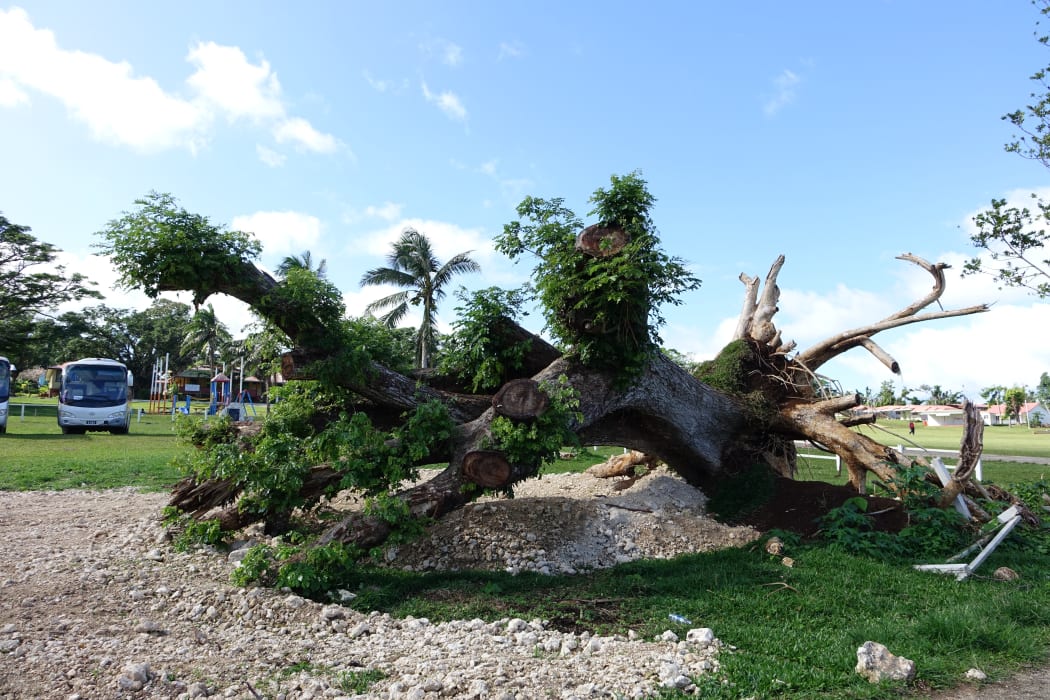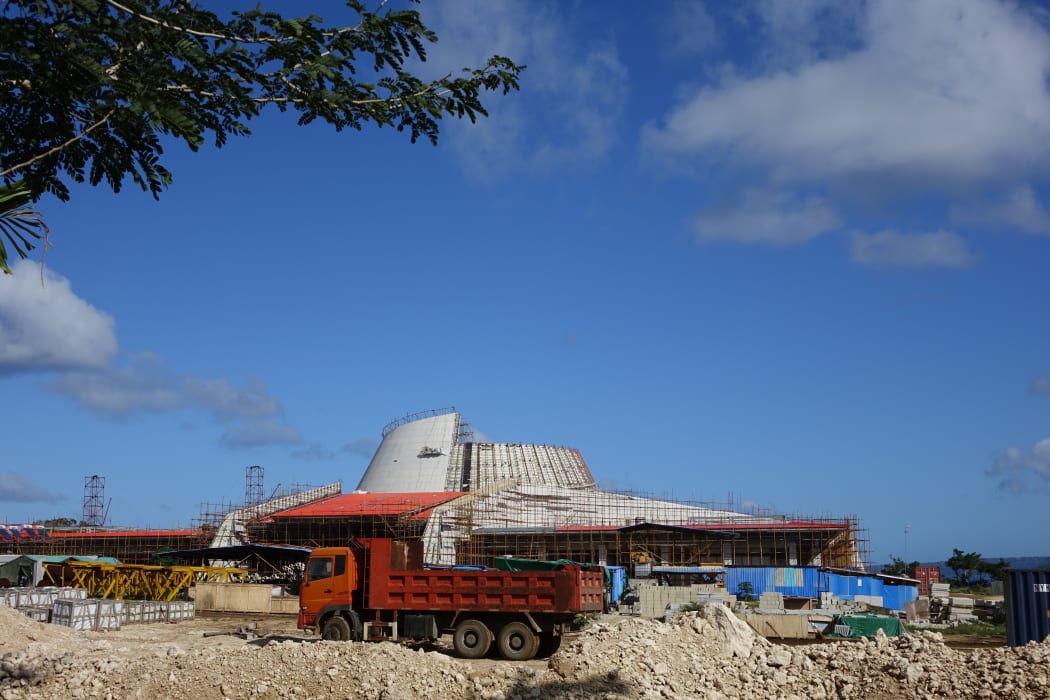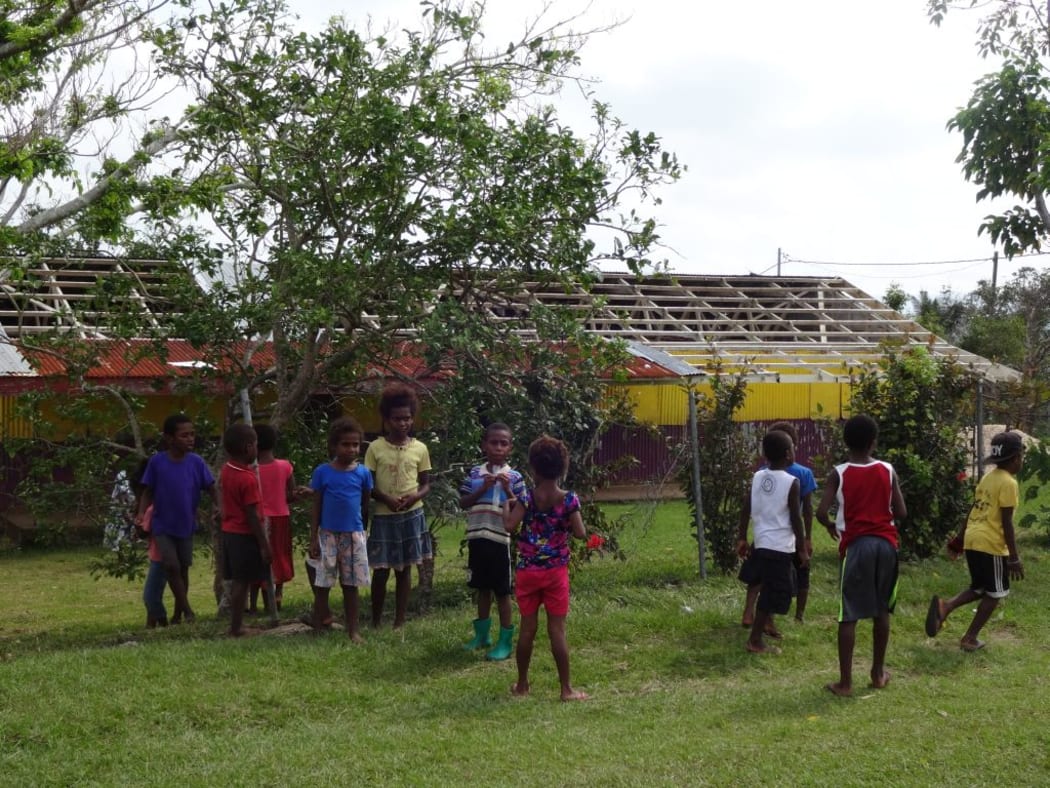
Cyclone Pam destroyed homes and crops, but in a sign of recovery, uprooted trees are sprouting leaves again. Photo: RNZ / Veronika Meduna
by Veronika Meduna
On 13 March 2015, Cyclone Pam tore through Vanuatu. The category five storm caused widespread damage throughout the archipelago, leaving thousands of people homeless and destroying most crops. In Vanuatu’s capital Port Vila, on the main island Efate, most buildings were destroyed.
Radio New Zealand International journalist Koroi Hawkins caught the first possible flight - on a defence force Hercules - to Port Vila to report on the aftermath and to file these images.
Four months later, when I had an opportunity to visit Efate, Port Vila was returning to life, with cafes and shops reopened, amid ongoing construction, including a new convention centre. Cruise ships had also returned to the harbour.

In Port Vila, the construction of a new convention centre is underway. Photo: RNZ / Veronika Meduna
Further out from the capital, at the Eratap village, villagers say they began rebuilding the day after the cyclone struck and most homes are inhabitable again. During the night of the cyclone, some sought shelter in the school, which lost its entire roof and is still waiting to be re-roofed.

Kids are back at school and playing happily, while their school building is waiting for a new roof. Photo: RNZ / Veronika Meduna
Richard Shing, an archaeologist at the Vanuatu Cultural Centre, says people are now realising that they have to build better houses to be prepared for disaster. He says traditional building techniques could help increase resilience.
We have documented accounts of traditional houses that withstood hurricanes in the past. There is a style of housing, not practiced a lot today in Vanuatu, where the roof touches the ground and anchors the beams of the roof into the ground. Where I come from down south we use that a lot and what happens during a hurricane is that you leave your house and go and hide in the traditional hut, and you’re safe.
He says people are aware of climate change, and that it is likely to bring more intense cyclones.
Margaretha Wewerinke is a Dutch environmental law lecturer who moved to Vanuatu a day before Cyclone Pam hit. She has joined the law faculty at the University of the South Pacific, where she teaches law with a focus on equitable development. She says climate change is already affecting island nations throughout the Pacific.
Not long after she left the Netherlands, the Dutch people made legal history. In the world’s first climate liability suit, they brought a claim against the Dutch government for failing to meet its obligation to protect its citizens from dangerous climate change. As a result, the court ordered the state to reduce greenhouse gas emissions by 25 per cent within five years.
She says she would prefer if no legal action was needed, but “it may become desirable for people and nations to use legal action to hold people who pollute and those who have the power to regulate polluting activities to account”.

